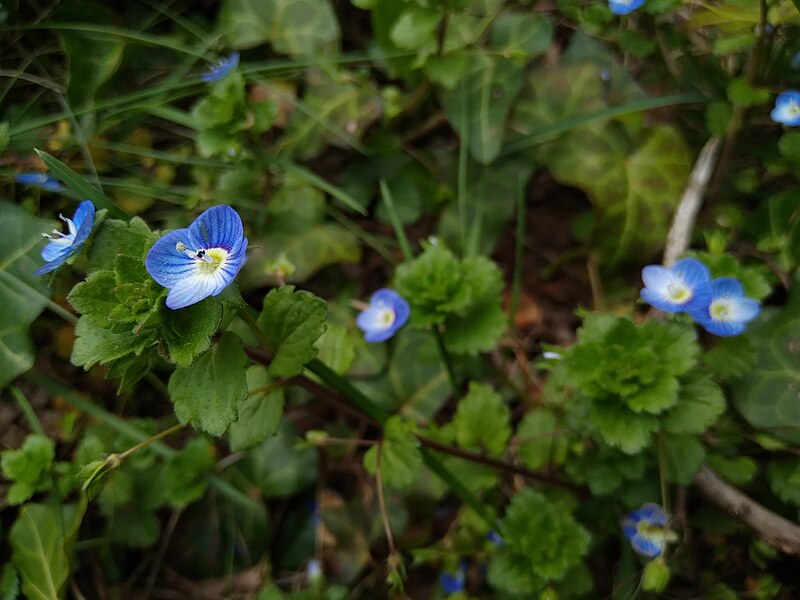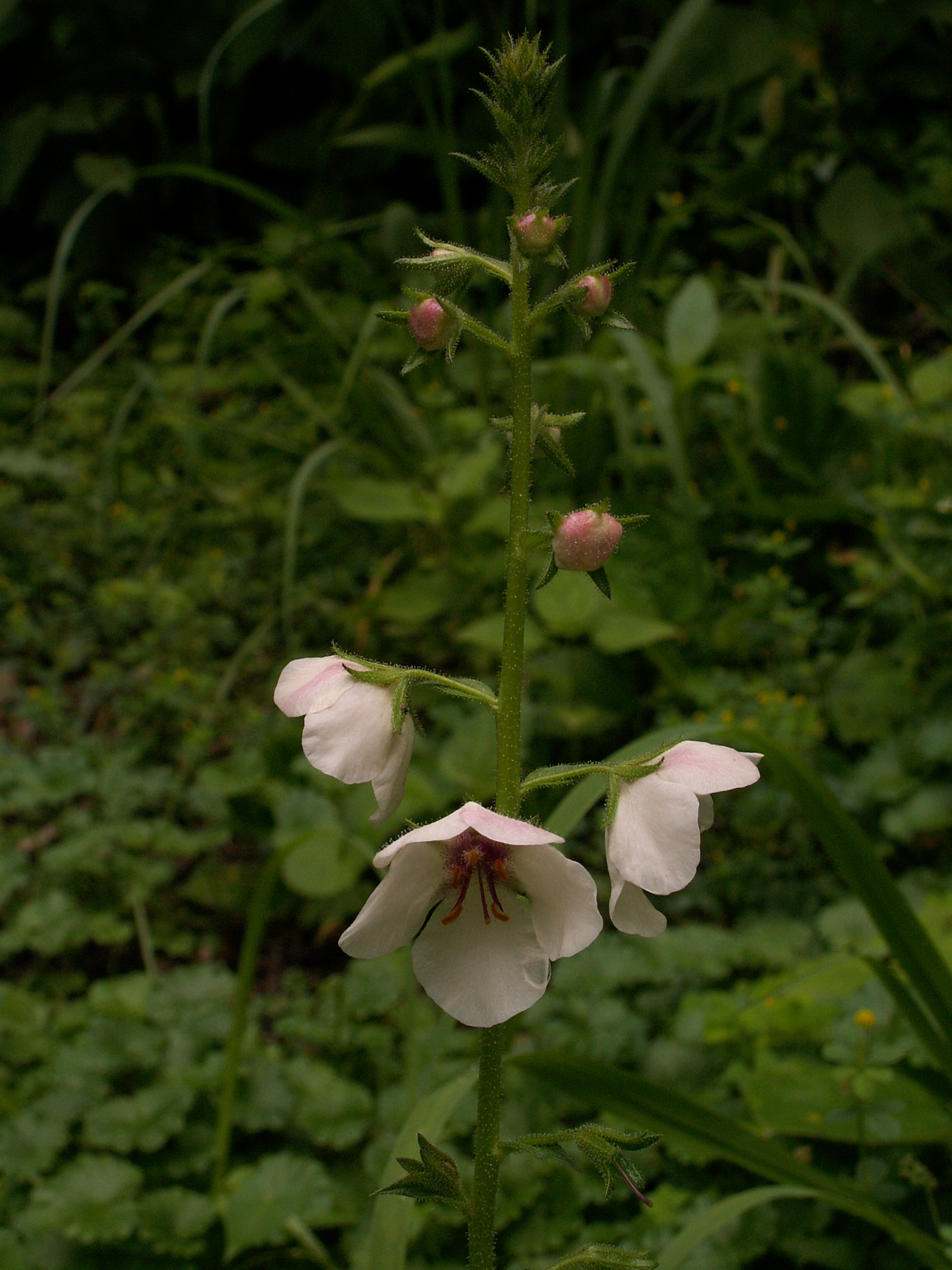If these were larger, they might be treasured garden flowers. They are found everywhere in our lawns, and they are small enough that it takes a good close look to notice the delicate violet stripes on the flowers. The plant is fuzzy, with oval leaves and rambling stems; it is short enough to pass easily under lawn-mower blades. You can find it blooming from mid-spring through summer; these plants were blooming in West End Park in late May.

Gray describes the genus and the species:
VERONICA [Tourn.] L. SPEEDWELL The lateral lobes of the corolla or the lowest one commonly narrower than the others. Stamens 2, one each side of the upper lobe of the corolla, exserted; anther-cells confluent at the apex. Style entire; stigma single. Capsule flattened, obtuse or notched at the apex, 2-celled, few-many-seeded. – Chiefly herbs; flowers blue, flesh-color, or white. (Derivation doubtful; perhaps the flower of St. Veronica.)
Corolla wheel-shaped, the tube short; capsule more or less notched, strongly flattened; low or decumbent herbs.
Perennials, stoloniferous or rooting at base, with opposite usually serrate leaves, racemes axillary, mostly opposite; corolla pale blue.
V. officinalis L. (COMMON S.) Pubescent; stem prostrate, rooting at base; leaves short-petioled, obovate-elliptical or wedge-oblong, obtuse, serrate; racemes densely many-flowered; pedicels shorter than the calyx; capsule obovate-triangular, broadly notched. — Dry hills and open woods, Nfd. to Ont., Mich., and southw. May-Aug. (Eurasia.)






